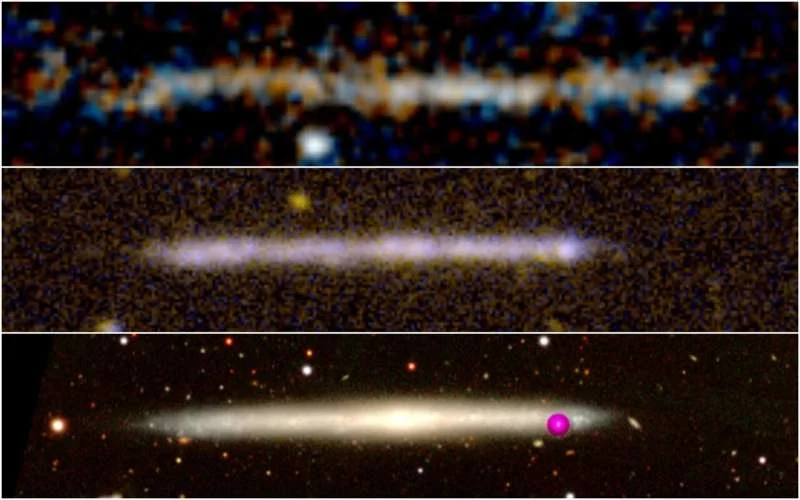A mysterious star trail formed eight billion years ago and recently discovered by the Hubble Space Telescope has become the problem of a number of research groups. Its size is similar to the Milky Way, and this very tall, narrow structure has led to various explanations for its origin.
According to a controversial early hypothesis, this star trail could be the result of a supermassive black hole passing through a massive gas cloud. The idea quickly ignited the imagination of the astronomy community because it requires so many complex exceptions. Therefore, several scientific groups continued to explore different and less exotic scenarios that could explain the observations.
In a recently published study Astronomy and Astrophysics Researchers from the Institute of Astrophysics of the Canary Islands (IAC) concluded that this unusual stellar structure could be interpreted as a galaxy with no visible protrusion from the edge. These types of galaxies, also called thin or flat galaxies, are relatively common.
“The movement, size, and number of stars are consistent with what we see in galaxies in the local universe,” explains Jorge Sánchez Almeida, first author of the paper and an IAC researcher. “It is gratifying to find a solution to this mystery; The proposed new scenario is much simpler. In a way, it’s also a shame, because out-of-control black holes are expected to exist, and this may be the first scenario observed.”
To confirm the hypothesis of a galaxy interpretation, the team compared the mysterious structure to IC5249, a well-known local bloat-free galaxy with a similar stellar mass, and found surprising agreement. According to Mireia Montes, an IAC researcher and co-author of the paper, “When we analyzed the velocities of this distant star structure, we realized that they were very similar to the velocities produced by rotating galaxies, so we decided to compare a galaxy that was much closer and found that they were extremely similar. “
“We also looked at the relationship between the predicted galaxy’s mass and its maximum spin speed and found that it is indeed a galaxy behaving like a galaxy,” says Ignacio Trujillo, an IAC researcher involved in the study. “This is an interesting object because it’s a fairly large galaxy far from Earth, with most galaxies being smaller.”












